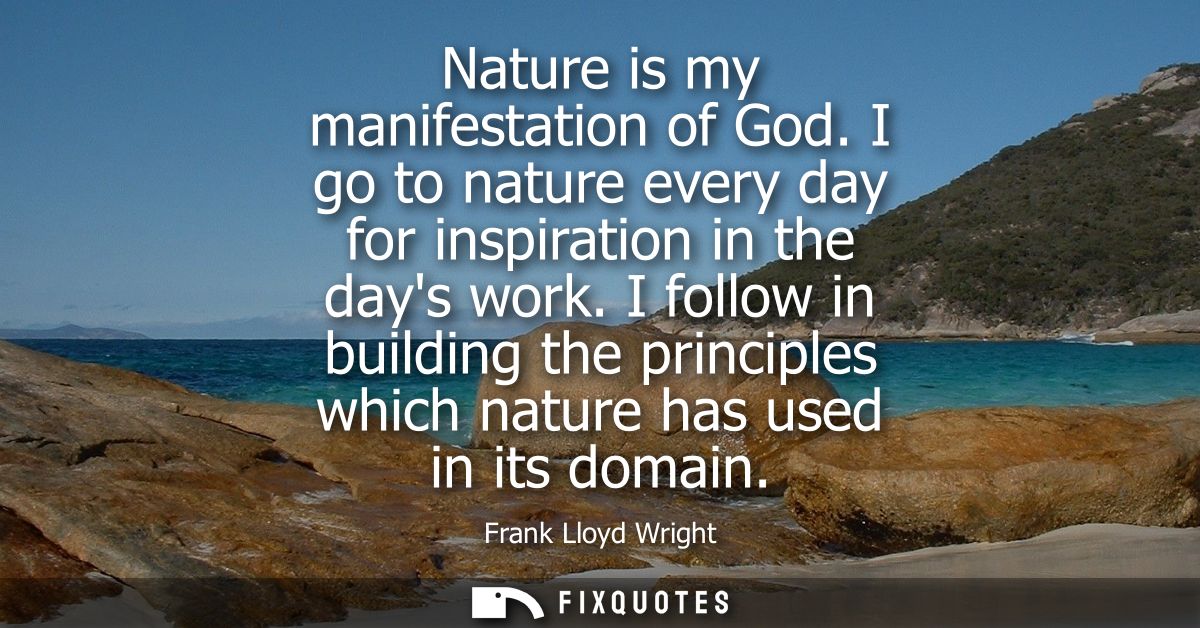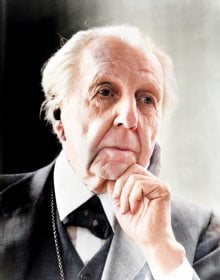"Nature is my manifestation of God. I go to nature every day for inspiration in the day's work. I follow in building the principles which nature has used in its domain"
About this Quote
Frank Lloyd Wright expresses a deeply spiritual and philosophical view of nature, elevating it as his personal manifestation of the divine. By identifying nature with God, Wright reveals his belief in the sacredness and inherent wisdom of the natural world. Nature is not merely a backdrop or a resource for him; it becomes a source of inspiration, guidance, and a model to emulate. The daily act of turning to nature highlights a ritualistic and reverent approach. He seeks inspiration not just for artistic creativity, but for the work of each day, implying that nature replenishes both the mind and spirit, offering clarity that grounds and refreshes his perspective.
Wright’s design philosophy is underscored by his conscious effort to align architectural principles with those found in the environment. Tacit in his words is the idea that nature operates on time-tested, harmonious laws, of balance, structure, efficiency, and beauty, that offer profound lessons for human creation. By seeking to “follow in building the principles which nature has used in its domain,” he positions himself as both student and collaborator with nature, rather than a conqueror or controller of it. This reflects the organic architecture movement he pioneered, which strove to harmonize human habitation with the environment through design that drew on natural forms, materials, and patterns.
Wright’s reverence for nature as a source of divine inspiration aligns also with the ideals of transcendentalism, suggesting that truth and meaning are best found by observing and emulating the natural world. The quote articulates not just an artistic creed, but a worldview in which the boundaries between the spiritual and the material blur, and creation itself becomes an act of honoring what is sacred in the world. The thread running through his words is one of humility, respect, and a persistent quest to bring the wisdom of the natural world into the realm of human invention, so that our built environment becomes a continuation of the beauty and order seen in nature itself.
More details
About the Author

